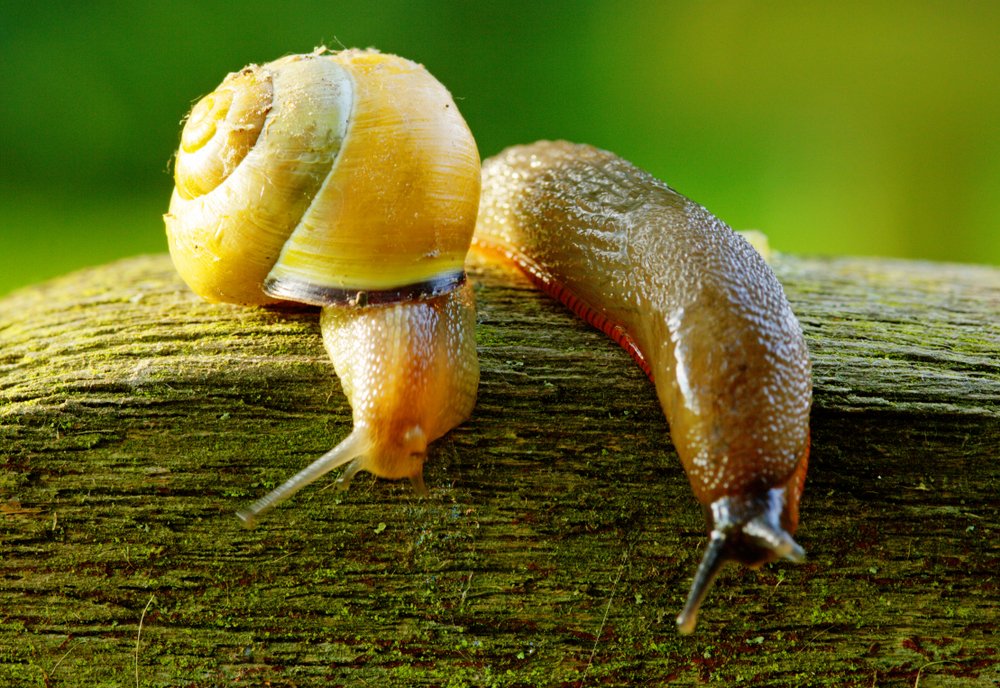Snails and slugs are similar animals. The main difference between them is that snails have shells and slugs do not. Snails and slugs belong to a group of mollusks called mollusks, including oysters, clams and squids. snails have a coiled body and shell. The main difference when looking at one of the creatures is that snails have a prominent shell and slugs do not. Snail shells are large enough for creatures to put ducks in for defense. Some snails can be retracted to close the shell. Slugs do not have mobile homes or defensive shells. The glands of the foot secrete a layer of mucus and slide over it. Slugs and snails are most active at night and cloudy days when the sun can be avoided. Slugs do not have shells, but they must live in moist, moist areas because they are protected by a layer of mucus around their body. Freshwater snails and sea snails live in water, but terrestrial snails do not. As I said, some snails like to live near the water, but they don't. Many snails, such as garden snails, prefer access to shallow water for drinking and bathing, but can drown if the water is too deep to escape. Life expectancy for slugs is 6-12 months, and in some cases up to 18 months. Although information on biology is limited, PNW allows for two generations of Grayfield slugs.
Slugs and snails share many similar functions. However, the most obvious difference between the two is that snails have coiled shells on their backs, whereas slugs do not contain these shells. The snail shell is composed of calcium carbonate and continues to grow as the snail grows. Both mucus to retain water
How can you tell the difference between a snail and a slug?
Differences ›Science› Biology› Zoology› Animals. Slugs and snails are generally distinguished by the presence of a large outer shell behind the snail. Both snails and slugs are abalone mollusks, and unlike most abalone, they are found terrestrial, or terrestrial.
Where does the slug go if there is no shell?
Without the large shells needed to carry, slugs can push themselves into many different habitats where snails cannot. For example, you might have a slug under the loose bark of a tree or stone, and a log on the ground. This is where snails can't go with their shells.
Do snails live on land or underwater?
In other words, they live underwater. Snails and slugs are the only abalone found on land. Most snails and slugs, however, live in the water. The most obvious difference between snails and slugs is the fact that snails have shells.
What is the average lifespan of slugs?
Comparison chart of slugs and snails Ordering slug snails Plumonata Plumonata Shell Internal; Occasionally traces or shrinkage coiled outer shell, large enough general size up to 15 inches (38 cm) ). Up to 10 inches (25.4 cm). Typical lifespan 1-6 years. 2-3 years (wild); 10-15 years (captive) 8 more lines
Can snails become slugs?
Slugs evolved from snails by reducing the size of their shells and internalizing them (yes, most slugs have an internal shell). Making the shell smaller can have consequences. A snail with an outer shell large enough to pull back.
Are slugs the same as snails?
Snails and slugs are both part of the same class of creatures, called abalone The most obvious difference between snails and slugs is the fact that snails have shells. The snail shell is like a house to carry on your back. On the other hand, slugs do not have shells.
Is the slug a snail without shells?
What is a slug? The simplest explanation is that slugs are shellless snails. Some of these mollusks actually have shells, while others have internalized shells that are used to store minerals.
Are slugs and snails from the same family?
Slugs and snails are mollusks, the same species that claim oysters, octopuses, squids, and clams. There are more than 60,000 species of snails and slugs. Sea-dwelling varieties begin with larvae floating on plankton. Land and freshwater slugs and snails usually hatch from eggs.

Below you will find two helpful answers on a similar topic. 👇
What do you call a group of jellyfish?Is a whale a mammal or a fish?
